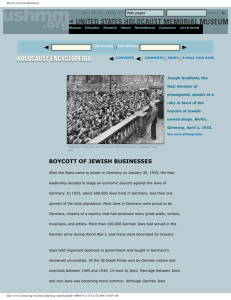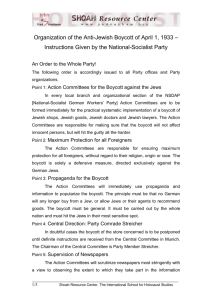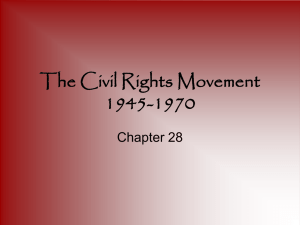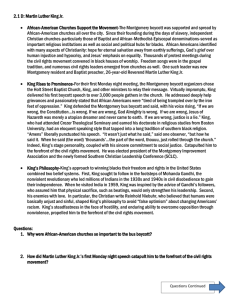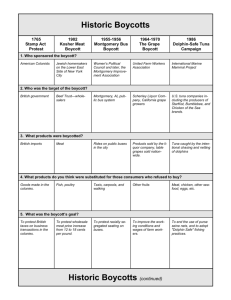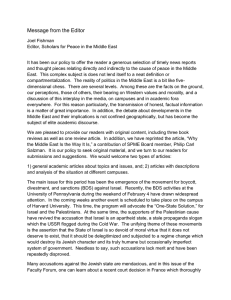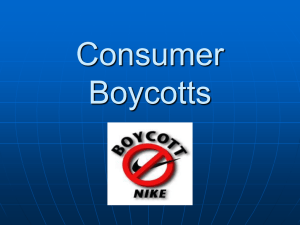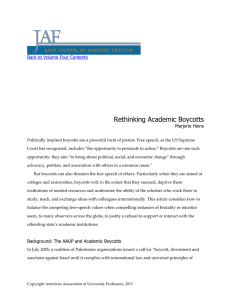Boycott, Anti-Jewish
advertisement
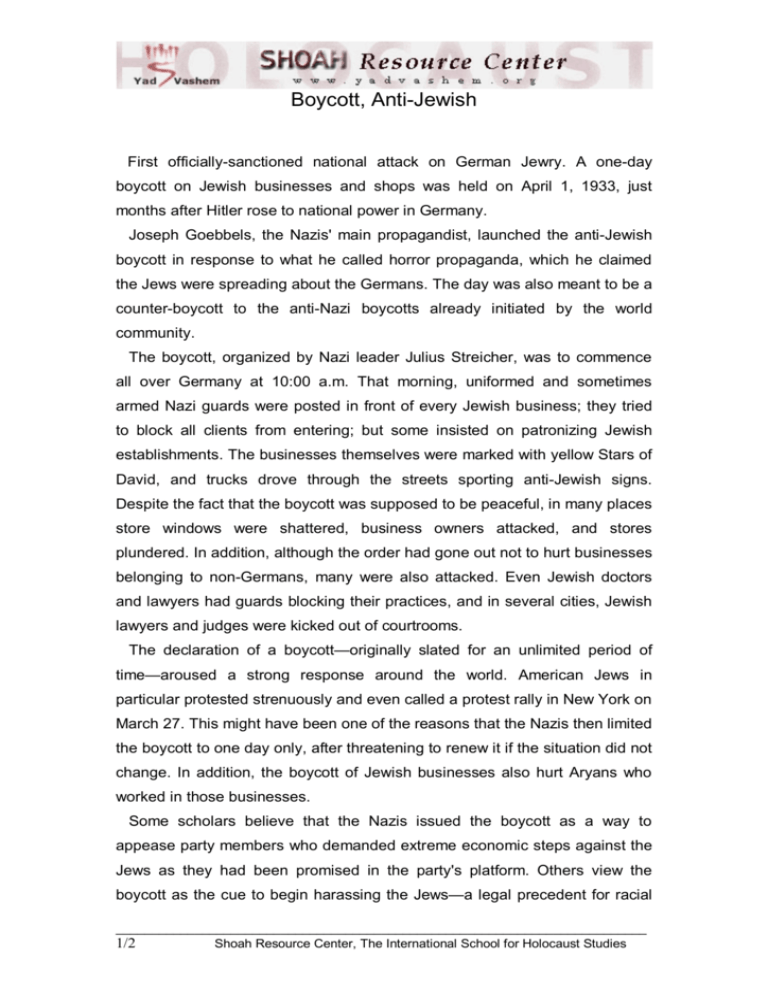
Boycott, Anti-Jewish First officially-sanctioned national attack on German Jewry. A one-day boycott on Jewish businesses and shops was held on April 1, 1933, just months after Hitler rose to national power in Germany. Joseph Goebbels, the Nazis' main propagandist, launched the anti-Jewish boycott in response to what he called horror propaganda, which he claimed the Jews were spreading about the Germans. The day was also meant to be a counter-boycott to the anti-Nazi boycotts already initiated by the world community. The boycott, organized by Nazi leader Julius Streicher, was to commence all over Germany at 10:00 a.m. That morning, uniformed and sometimes armed Nazi guards were posted in front of every Jewish business; they tried to block all clients from entering; but some insisted on patronizing Jewish establishments. The businesses themselves were marked with yellow Stars of David, and trucks drove through the streets sporting anti-Jewish signs. Despite the fact that the boycott was supposed to be peaceful, in many places store windows were shattered, business owners attacked, and stores plundered. In addition, although the order had gone out not to hurt businesses belonging to non-Germans, many were also attacked. Even Jewish doctors and lawyers had guards blocking their practices, and in several cities, Jewish lawyers and judges were kicked out of courtrooms. The declaration of a boycott—originally slated for an unlimited period of time—aroused a strong response around the world. American Jews in particular protested strenuously and even called a protest rally in New York on March 27. This might have been one of the reasons that the Nazis then limited the boycott to one day only, after threatening to renew it if the situation did not change. In addition, the boycott of Jewish businesses also hurt Aryans who worked in those businesses. Some scholars believe that the Nazis issued the boycott as a way to appease party members who demanded extreme economic steps against the Jews as they had been promised in the party's platform. Others view the boycott as the cue to begin harassing the Jews—a legal precedent for racial __________________________________________________________________________ Shoah Resource Center, The International School for Holocaust Studies 1/2 discrimination that could only lead downhill. In addition to the official one-day boycott, unofficial boycott continued throughout Germany. (see also boycotts, anti-Nazi.) __________________________________________________________________________ Shoah Resource Center, The International School for Holocaust Studies 2/2


